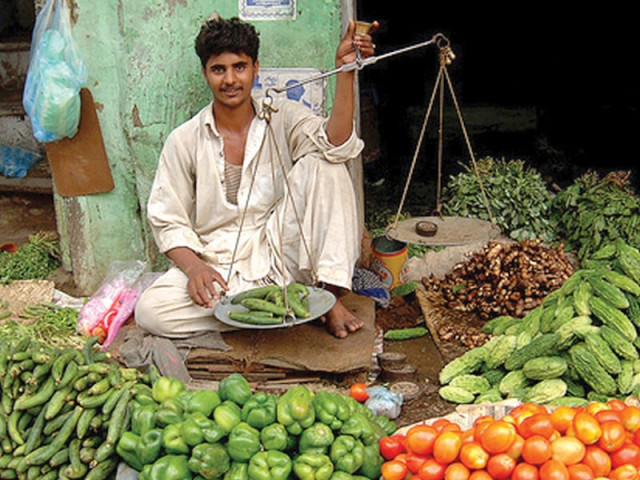Fostering agriculture through marketing reforms
Marketing system should be revitalised to address future challenges.

The marketing system is normally evaluated with the help of price spread (marketing margin) approach, which indicates the relative share of various market players engaged in the marketing of agricultural produce. PHOTO: FILE
The sector not only meets food requirements of people but also gives raw material for businesses as well as input for export goods. It has seen many ups and downs in the history, but general growth has remained largely satisfactory. It has the potential to sustain the economy in future as well if attention is paid to resolving growing challenges. Its expansion mainly relies on the development of an efficient and effective marketing system.

Food crops such as wheat, rice and maize are the main staples for the majority of people in Pakistan. The food security of the nation greatly depends on sustainable provision of these food crops.
Wheat is the primary food crop of the country with respect to area under cultivation and production followed by rice and maize. The food crops are mainly produced in Punjab and Sindh whereas other provinces have a minor share.
The marketing system for food crops is illustrated with several market intermediaries who execute their tasks in transferring the produce from farmers to consumers. An agricultural produce changes six to seven different hands on an average before reaching the end consumer.
It is commonly argued that market players exploit small and medium-sized farmers and prevent them from receiving their reasonable share. This assertion may not be overlooked as many middlemen, avoiding terms and conditions of the Agricultural Produce Market Acts, have been found taking higher charges as well as commission. Regardless of all these assertions, importance and functions of the market players cannot be undervalued and require to be examined critically.
The agricultural marketing system is normally evaluated with the help of price spread (marketing margin) approach, which indicates the relative share of various market players engaged in the marketing of agricultural produce. It has been found that farmers’ share in the consumer rupee is relatively less in case of fresh or perishable food commodities as compared to non-perishable food items.
Various techniques and approaches are employed to calculate the marketing margins in the country. However, reliable data about these margins is deficient, which makes it difficult to formulate proper strategies and policies.
Improvement in infrastructure plays a key role in proper functioning of the marketing system. A well-organised logistics system is extremely important for a smooth performance of the marketing system. If transport services are inadequate, of bad quality or costly, then farmers will be at a disadvantage as a costly service will slash their margins.
Seasonally blocked road and rail networks or sluggish and sporadic transportation services, combined with improper storage facilities, lead to loss of a big chunk of agricultural commodities. As such, proper roads play a fundamental role in escalating production of commodities.
In addition, poor post-harvest handling of agriculture produce results in qualitative and quantitative losses, forcing consumers to pay higher prices for production loss.
Shortage of major food commodities and irregular shortages and surpluses of the agricultural produce underline the need for the government to take immediate steps to strengthen the agricultural marketing mechanism. Poor roads from farm to markets, inefficient input and output markets, fluctuation in prices, hoarding and shortages, lack of storage facility, poor application of standards and grades are some of the outstanding issues which need to be handled and given top priority in the national plan.
Though significant steps have been taken to improve infrastructure, food shortages highlight that the marketing system should be revitalised and expanded to address the challenges in the years to come. The transportation services, wholesale markets, storage houses, food processing units, etc are not enough and marketing services fall short of needs.
Small farmers and other stakeholders in the farming sector do not have adequate funds to take their commodities to markets of big cities.
Policymakers should decisively analyse past performance, current status and future prospects of food crops to get valuable input and information for effective policymaking. They should also keep in view the growing challenges faced by the agricultural marketing system, especially in relation to the food crops.
The writers are faculty members at the Institute of Business Management Sciences, University of Agriculture, Faisalabad
Published in The Express Tribune, July 15th, 2013.
Like Business on Facebook, follow @TribuneBiz on Twitter to stay informed and join in the conversation.

















COMMENTS
Comments are moderated and generally will be posted if they are on-topic and not abusive.
For more information, please see our Comments FAQ